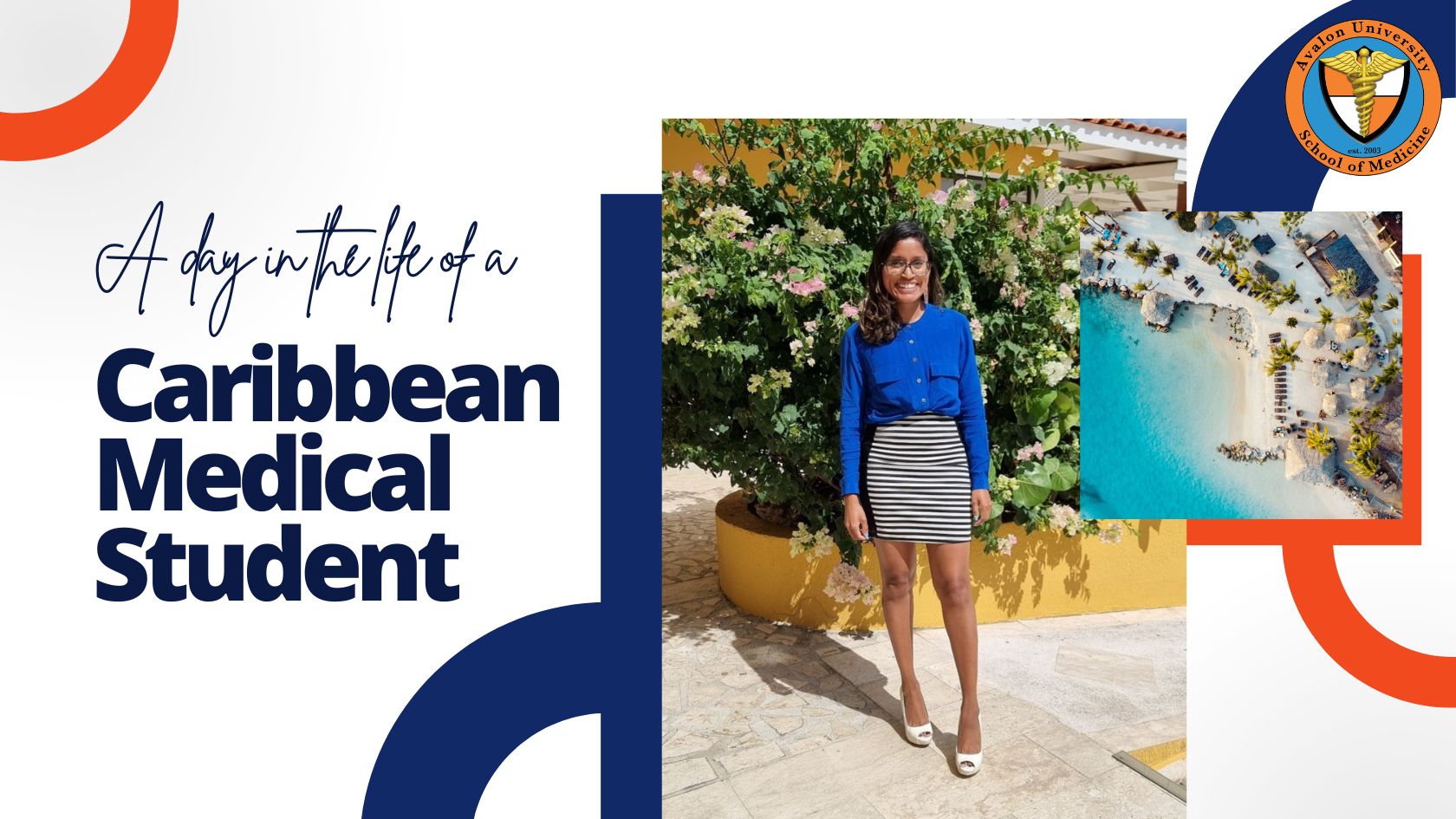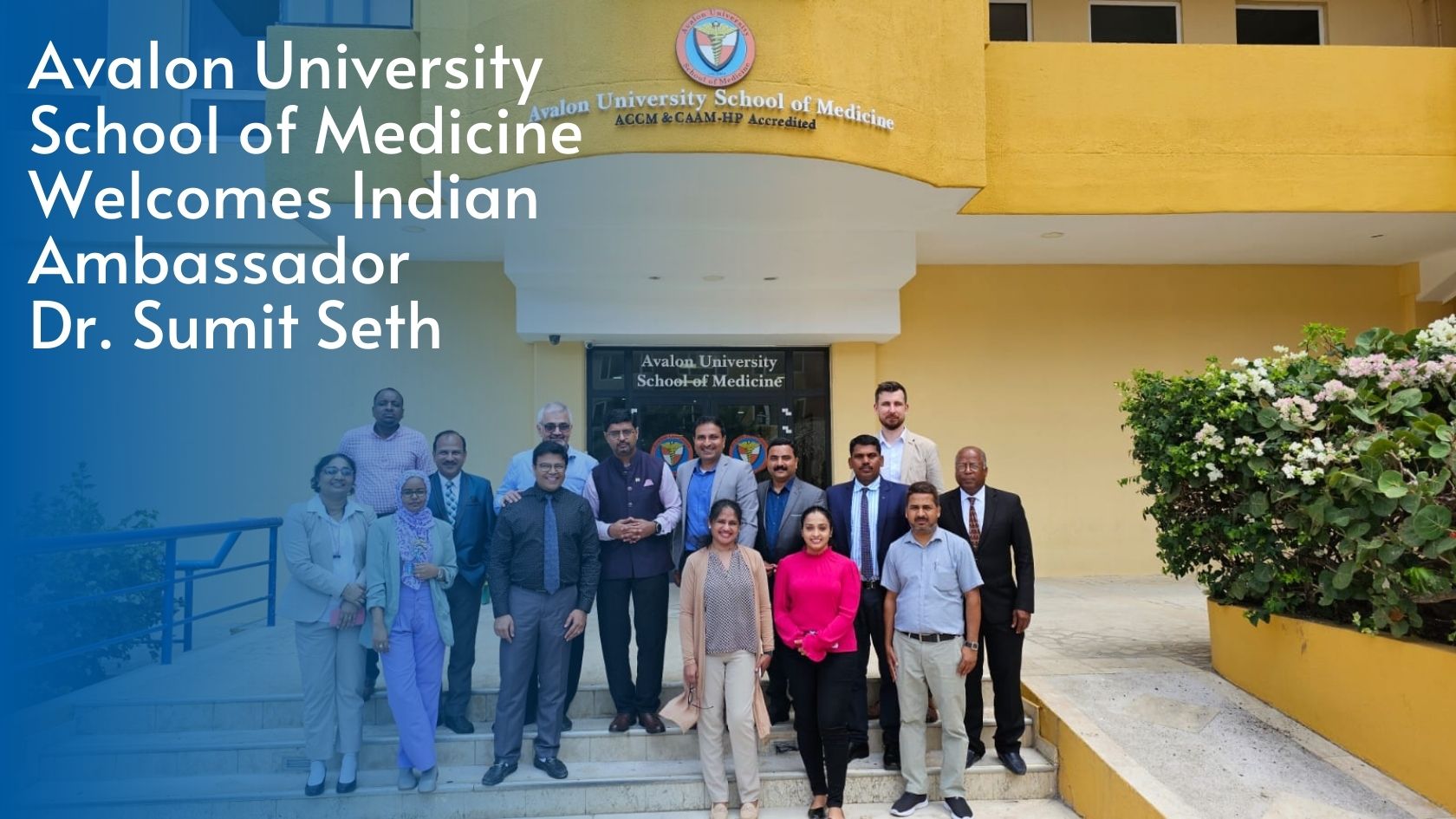A Day in the Life of a Caribbean Medical Student
Blog Article by – Ruwangi Semage
Curacao, a beautiful little island in the Caribbean with its pristine beaches, crystal blue waters, and vibrant culture, might seem like a dream holiday destination for many. But for a medical student here, it’s a place where rigorous education, demanding long-hour schedules, and a unique island lifestyle come together. As the sun rises over the ABC islands of which Curaçao is part of, a day in the life of a Caribbean medical student begins—blending the allure of tropical surroundings with the intense commitment to the journey to becoming a doctor.
My Morning Escapades
My day typically starts early, around 5:30 am. The first rays of dawn filter through the mango trees, signaling the beginning of another day packed with learning and challenges. After a quick breakfast, often consisting of sliced bananas, halved strawberries, and a hearty serving of oatmeal with chia seeds and milk, I head to the dining table for a brisk mental workout. It is time to strategically pre-read for the content that will be covered in class today. This mental workout is gladly accompanied by a large cup of freshly brewed coffee that jolts my brain awake and enables me to absorb the words from the textbooks.
By 7:30 am, it’s time to head to the classroom. The commute is a scenic one, with views of the gorgeous ocean, lush greenery, bubbly locals of Curacao and the adorable stray dogs. Despite the beauty, there’s no time to linger; the rigorous schedule awaits. I hurry along to get to class on time.
Academic Adventures
Classes usually begin at 8:00 am sharp, and students are expected to be present in their respective rooms by 7:45. The curriculum is intensive, covering subjects like anatomy, physiology, biochemistry, and pharmacology. Some lectures are complemented by laboratory sessions, where students get hands-on experience with cadaver dissections, histology or pathology slides, and biochemical experiments. The faculty comprises seasoned professionals, many of whom have practiced medicine globally, bringing a wealth of knowledge and diverse perspectives to enrich the brains of doctors to-be.
A typical morning from 8 am to 12 noon is a mix of lectures and labs, with short breaks in between. I spend the breaks discussing complex topics with peers, verifying doubts with the professors, grabbing a quick snack or running off to get some fresh air.
Midday Antics
The lunch break begins at 12 noon and lasts an hour, offering a brief respite from the academic rigor. Students often gather in the student lounge, dorm cafeteria or under shaded areas on campus, enjoying a mix of local Caribbean cuisine—stewed chicken, aromatic rice and fried plantains. This time is not just for nourishment but also for socializing and unwinding with friends before the afternoon sessions. On particularly tiring days, I even opt to get some shut eye or listen to music for ten minutes.
Afternoon Classes and Clinical Skills
The afternoon is dedicated to more interactive learning experiences. From 1:00 pm onwards, students delve into understanding lab values, visualizing various states of disease, and memorizing drug mechanisms. These sessions are crucial, bridging the gap between theoretical knowledge and practical application. Clinical experience is an integral part of the curriculum, and students get to practice history taking and physical exams on patients during clinical skills class. Students learn to take vitals, undertake physical tests and ask questions to gauge the appropriate patient care. This exposure is invaluable, as it prepares them for real-world medical practice in diverse settings.
Evening Studies and Winding Down
By 5:00pm, formal classes and labs typically conclude, but the day is far from over. Many students head to the library or dorm rooms to review the day’s material, work on group projects, or prepare for upcoming quizzes and exams. The competitive nature of medical school requires constant dedication, and evening study sessions are a staple in every student’s routine. For myself personally, this is around the time I head home, taking the same beautiful route and anticipating a glimpse of the brilliant sunset over the ocean. I eat dinner around 7:00 pm and use it as a chance to relax and enjoy some downtime. I will enjoy a hot meal while chatting with my parents video call to spend quality time back home on a with my family. For many students, this is also a time to connect with family due to the long distance, share experiences, and unwind.
Night-time Shenanigans
The night is often reserved for personal study. Students might spend a few hours going through textbooks, watching medical tutorials, or reviewing content with friends or in study groups. The sound of rustling trees in the background provides a calming ambiance, a gentle reminder of the unique setting in which they are pursuing their dreams. Despite the demanding schedule, it’s important for students to find time for self-care. Many practice yoga, meditation, or simply take a walk along the beach to decompress. The balance between an intense academic workload and moments of relaxation is crucial for maintaining mental and physical health.
The Weekend Venture
Weekends offer a slight reprieve and I spend Saturday mornings in review sessions or flashcardmaking. Many students also engage in other activities that need doing such as making the trip to get groceries, meal prepping for the week and getting laundry done. These seemingly mundane activities must be successfully incorporated into the schedule so they do not burden the limited time and immense workload required of a medical student. Weekends are also a time to take a swim in the lush blue waters and hike the trails on Curacao, exploring the flora and fauna.
Conclusion
Being a medical student in the Caribbean is a unique blend of intense academic pressure and the serene, breathtaking environment of the island. The journey is demanding, requiring dedication, resilience, perseverance and a deep passion for medicine. However, the experience is also enriching, offering a distinctive perspective on healthcare in a diverse and often underserved region. As the sun sets, painting the sky in hues of magenta and rose, I reflect on another day of hard work and learning, ready to face the challenges of tomorrow with renewed vigor.





